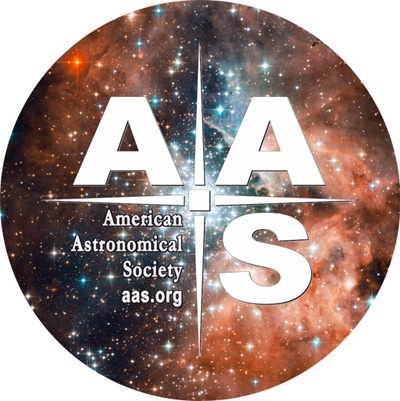10 July 2020
Tarini Konchady

SN 1994D (lower left), detected at the edge of galaxy NGC 4526, is an example of a Type Ia supernova. [NASA/ESA/The Hubble Key Project Team/The High-Z Supernova Search Team]
Accurate distance measurements are critical to astronomy. A Type Ia supernova is one of the few objects that we can trust for making distance measurements since they have a fixed peak brightness. But can the brightness of such a supernova change significantly based on the properties of its host galaxy? And what does this mean for our understanding of dark energy?
Lighthouses in the Distant Universe
A Type Ia supernovae is what’s known as a “standard candle” — we know what its brightness is at a particular distance, and when we observe these supernovae in distant galaxies, we can extrapolate to determine how far away those galaxies are. Like lighthouses, the fainter a Type Ia supernova is, the further away it is.

Accurate distance measurements form the backbone of astronomy, and Type Ia supernovae are especially valuable because they allow us to measure extremely large distances beyond the reach of other standard candles. However, the properties of Type Ia supernovae were and are determined empirically, so a mistaken assumption about a supernova can trickle down and cause miscalculations further down the road.
Type Ia supernova distances are in play in a rather contentious part of astronomy: measurements of the Hubble constant. The value of the Hubble constant is measured in one of two ways: using the cosmic microwave background (CMB), and using Type Ia supernovae and variable stars called Cepheids to measure the distances and velocities of far-off galaxies. The value measured with supernovae is significantly larger than the value measured with the CMB, however — and it suggests the presence of “dark energy”, a mysterious energy that’s accelerating the expansion of the universe.
Recently, it’s been hypothesized that the supernova-based measurement is biased by an overlooked relation between peak Type Ia supernova brightnesses and the age of their host galaxies. Accounting for this brightness–age relation, if it holds up, could eliminate the need for dark energy and relieve the discrepancy between the two measurements of the Hubble constant. But a new study led by Benjamin Rose (Space Telescope Science Institute) now refutes this proposed relation.
Sample Adjustments
Rose and collaborators started their analysis by examining the sample of 34 Type Ia supernovae that was used to claim the possible brightness–age relation. The authors found that 10 supernovae in the sample fail at least one of the quality cuts typically used for cosmological studies. These include the supernova not being observed prior to its peak brightness, and an overall lack of observations.
Rose and collaborators also argue that the prior study didn’t correctly account for the error on Type Ia supernova distances. Once these errors are accounted for and quality cuts are made to the supernova sample, the brightness–age relation appears negligible to measurements of the Hubble constant.
Rose and collaborators also attempted to determine a brightness–age relation using a larger, robust sample of 254 Type Ia supernovae. They found no relation significant enough to suggest that the supernova distances had been misestimated — so there should be no changes to the supernova-based measurement of the Hubble constant.
While this particular relation may not have borne out, Rose and collaborators agree that the properties of Type Ia supernovae must be constrained as much as possible for reliable distance measurements to be made. For now, however, it looks like dark energy may be here to stay!
Citation
“Evidence for Cosmic Acceleration Is Robust to Observed Correlations between Type Ia Supernova Luminosity and Stellar Age,” B. M. Rose et al 2020 ApJL 896 L4.
https://iopscience.iop.org/article/10.3847/2041-8213/ab94ad
See the full article here .

five-ways-keep-your-child-safe-school-shootings
Please help promote STEM in your local schools.

AAS Mission and Vision Statement
The mission of the American Astronomical Society is to enhance and share humanity’s scientific understanding of the Universe.
The Society, through its publications, disseminates and archives the results of astronomical research. The Society also communicates and explains our understanding of the universe to the public.
The Society facilitates and strengthens the interactions among members through professional meetings and other means. The Society supports member divisions representing specialized research and astronomical interests.
The Society represents the goals of its community of members to the nation and the world. The Society also works with other scientific and educational societies to promote the advancement of science.
The Society, through its members, trains, mentors and supports the next generation of astronomers. The Society supports and promotes increased participation of historically underrepresented groups in astronomy.
The Society assists its members to develop their skills in the fields of education and public outreach at all levels. The Society promotes broad interest in astronomy, which enhances science literacy and leads many to careers in science and engineering.
Adopted June 7, 2009
